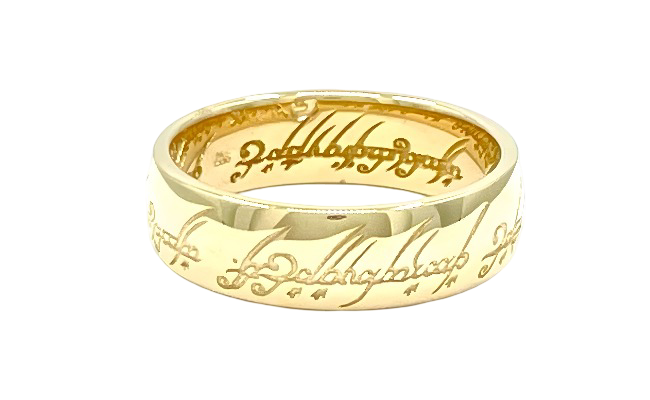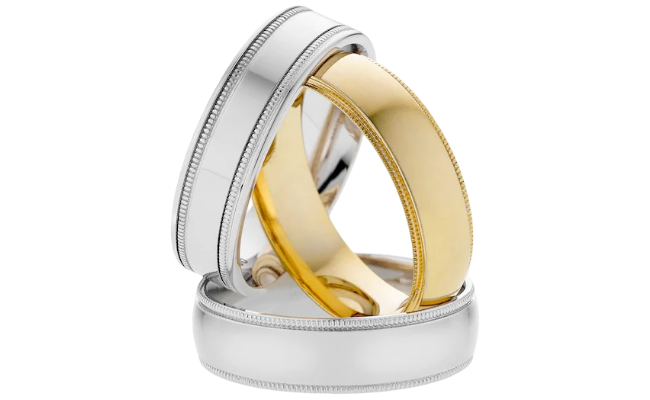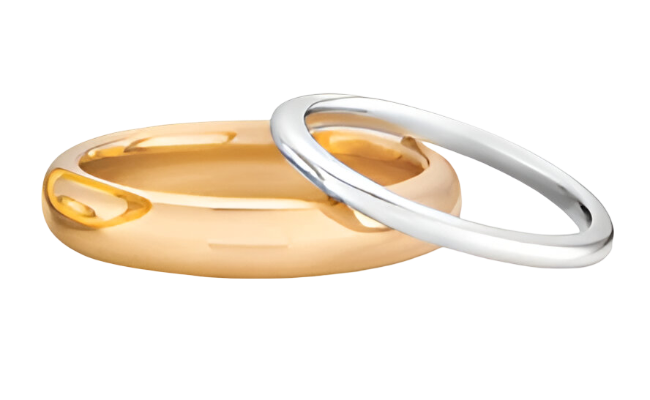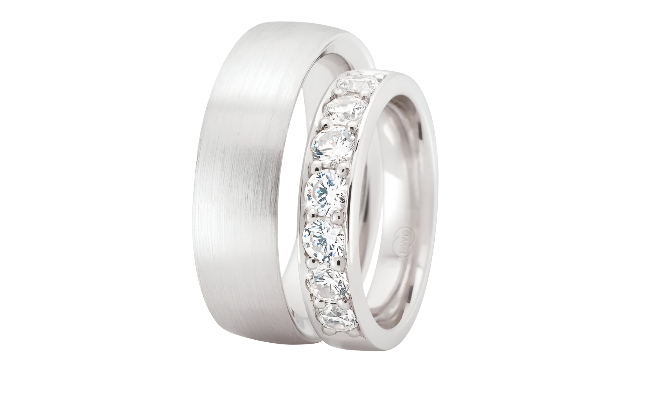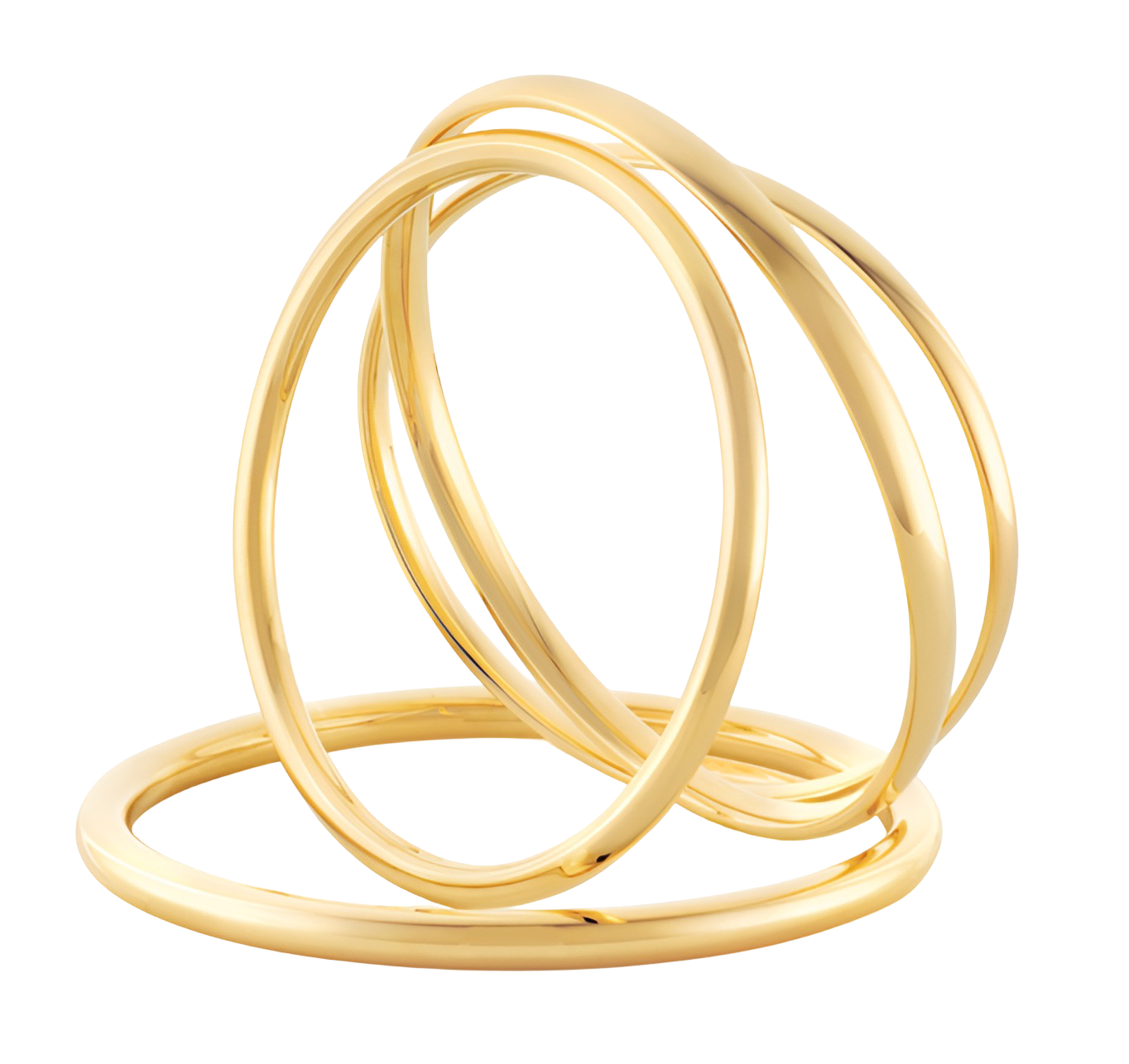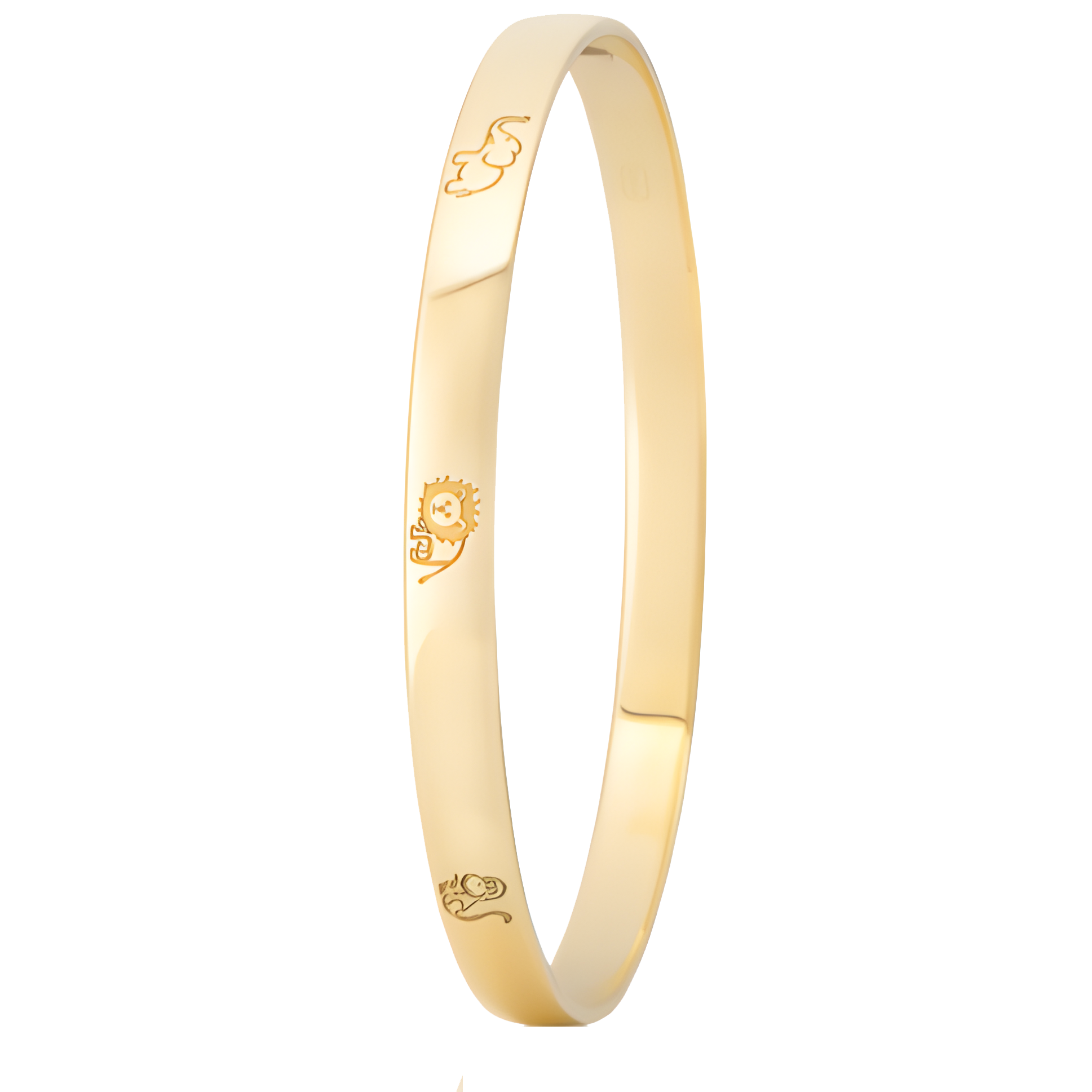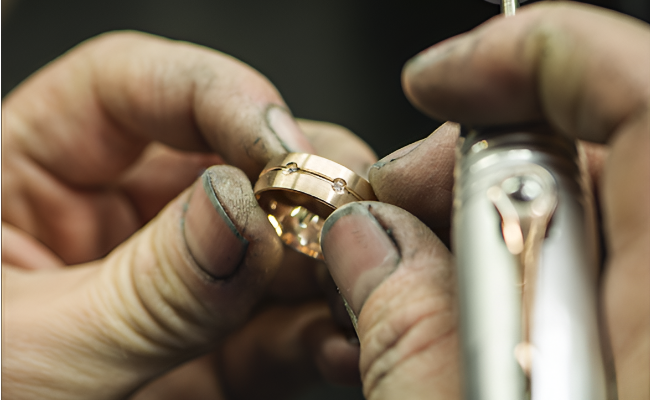Jewellery Information Service
en selecting the perfect metal for your jewellery, the multitude of options available can seem overwhelming. Each metal boasts unique characteristics and qualities that can significantly influence the overall aesthetic, durability, and maintenance of your jewellery. This is particularly true for engagement rings, wedding bands, and other cherished pieces of jewellery.
Understanding these properties will empower you to make a well-informed decision that aligns with your personal style and preferences. In this comprehensive guide, we will delve deep into some of the most popular and enduring choices in the realm of precious metals. From the timeless allure of yellow gold to the modern sophistication of white gold, we will examine each metal's distinctive features and help you find the perfect match for your jewellery needs. Let's embark on this enlightening journey through the world of precious metals and discover which one shines the brightest for you.
The Metals:
Platinum 950
Platinum 950 (or Platinum) is 95% pure platinum and 5% alloy.
- Platinum is stronger and has a higher density than any other precious metal.
- Setting diamonds and gemstones is a safe and secure process.
- Any scratches (from everyday wear and tear) can be easily polished out of the metal.
- Platinum will always retain its original beauty, brightness and whiteness.
- Unlike white gold, it requires minimal maintenance because it does not require rhodium plating.
- It is hypoallergenic, a perfect ring metal for those with allergies
Palladium
Palladium is 95% pure palladium and 5% alloy.
- It is slightly warmer in colour, with a grey or white tone, compared to other white metals.
- Palladium is strong, durable, and its whiteness will last forever.
- Like Platinum, it will require very little maintenance as there is no need for rhodium plating.
- Due to its rich purity, it is hypoallergenic.
- A great ring metal option for those with sensitive skin.
Platinum 600 is 60% pure platinum and 40% alloys.
- It is a grey/white colour slightly darker than platinum 950.
- Platinum 600 is one of the strongest precious metals with a Vickers International hardness rating of 230.
- This means that Platinum 600 is twice as hard as 9ct gold.
- Platinum 600 requires less maintenance than any other metal due to its hardness and does not require rhodium plating.
- It is hypoallergenic.
Yellow Gold
Yellow Gold is available in 9ct (37.5% pure gold), 14ct (57.5% pure gold), and 18ct (75% pure gold).
- Yellow gold is the natural and therefore traditional colour of gold.
- It is very good for setting diamonds and gemstones, and wears very well.
- Gold has always been the traditional precious metal.
White Gold
White Gold is available in 9ct (37.5% pure gold), 14ct (57.5% pure gold), and 18ct (75% pure gold) and is created by mixing fine yellow gold with other precious white metals, such as nickel, silver, platinum or palladium.
- Adding these metals to yellow gold not only gives it its white colour, but it also creates a stronger and more durable alloy perfect for use in jewellery.
- Although most people think that white gold is a naturally white metal, it is not. Save
- White Gold jewellery is often rhodium-plated.
- Rhodium itself is a rare, silver-white precious metal and a member of the platinum family.
- A thin layer is applied to the metal, giving it a bright, white & shiny appearance that resists tarnishing.
Rose Gold
Rose Gold is available in 9ct (37.5% pure gold), 14ct (57.5% pure gold), and 18ct (75% pure gold).
- Rose gold is created by mixing fine yellow gold with other metals, such as copper, which gives it a pink or red colour.
- Rose gold is good for setting diamonds and gemstones.
- It has a warm, traditional look, often reminiscent of antique jewellery.
Carbon Fibre
Carbon Fibre is a polymer and is sometimes known as graphite fibre.
- It is a robust material that is also very lightweight.
- It is 10 times stronger than steel.
- It has a natural black appearance, similar to that of wood.
- It has become a popular addition to jewellery due to the contrast of colours with precious metals and its durability and hardness.
Titanium
Titanium is a lightweight, dark grey metal.
- It is very lightweight, has excellent corrosion resistance and high impact toughness.
- Dora uses grade 2 titanium in the use of their rings.
- Titanium can be found in meteorites, on the moon, and in some stars.
- It is the ninth most abundant element of the Earth's crust.
- Titanium is also hypoallergenic.
Silver
Silver is a white metal similar in appearance to white gold..
- A soft, lustrous transition ring metal, it exhibits the highest electrical conductivity, thermal conductivity, and reflectivity of any metal
Lets Talk Metals-
PLATINUM 950
Platinum 950 is regarded as one of the finest choices for fine jewellery, consisting of 95% pure platinum and 5% alloy metals to enhance its durability. Its remarkable qualities make it particularly favoured for engagement and wedding rings. Here’s a detailed look into the exceptional characteristics of this exquisite metal:
Exceptional Strength and Density: Platinum is one of the strongest and densest precious metals available. Its substantial weight contributes to a feeling of quality and significance in jewellery. This impressive density ensures that your pieces can withstand the rigours of daily wear, providing longevity and durability.
Secure Gemstone Settings: Platinum’s inherent strength allows for secure settings that keep gemstones firmly in place. This attribute is crucial for precious stones like diamonds, which can be vulnerable to being dislodged. The additional metal surrounding the setting creates a sense of security, especially for intricate designs.
Easy Restoration and Maintenance: While everyday wear may lead to minor scratches on your platinum ring, the good news is that these imperfections are easily resolved. A professional polish is sufficient to remove surface scuffs and restore the piece's original lustre, making it a practical choice for those who wear their jewellery frequently.
Timeless Beauty: Renowned for its natural, brilliant whiteness, platinum stands apart from other white metals. Unlike white gold, which may require periodic rhodium plating to maintain its brightness, platinum’s radiant appearance remains unchanged over time, offering a lasting aesthetic appeal.
Hypoallergenic Properties: Platinum is an excellent choice for individuals with metal allergies or sensitivities. Its hypoallergenic nature means you can wear it comfortably without worrying about skin reactions, making it suitable for everyone.
PALLADIUM
Palladium is another luxurious choice for jewellery, comprising 95% pure palladium and 5% alloy metals. It offers distinct characteristics that set it apart:
Warm Grey/White Colour: Palladium has a unique, warm grey/white hue that distinguishes it from other white metals. This softer tone adds character to jewellery and can enhance the visual appeal of various gemstones set within it.
Strength and Durability: Much like platinum, palladium is robust and built to last. Its natural resistance to tarnish means that it preserves its beauty without the need for an additional coating or plating.
Minimal Maintenance Requirements: One of the appealing aspects of palladium is its low maintenance. Owners can enjoy hassle-free wear without worrying about frequent polishing or restoring its shine, making it an excellent choice for busy lifestyles.
Hypoallergenic Qualities Palladium is also hypoallergenic, ensuring that even those with sensitive skin can wear it comfortably. This quality, combined with its stylish appearance, makes palladium a sought-after option for a wide audience.
PLATINUM 600
Platinum 600 is an alternative alloy that contains 60% pure platinum and 40% alloy. This variant offers unique benefits that may appeal to certain preferences:
Distinctive Grey/White Colour: Platinum 600 has a slightly darker grey/white shade than its 950 counterpart. This unique colour gives pieces made from platinum 600 a distinctive flair, allowing for a richer contrast, especially with coloured gemstones.
Unparalleled Strength: Boasting a remarkable Vickers International hardness rating of 230, platinum 600 is exceptionally strong, even more so than 9-carat gold. This greater hardness minimises wear and tear, making it an enduring choice for those who seek longevity without extensive maintenance.
Reduced Need for Maintenance: Thanks to its hardness, platinum 600 requires less frequent polishing and upkeep compared to softer metals. Owners can enjoy the aesthetics of their jewellery without the constant need for care.
Hypoallergenic: Like its platinum counterparts, platinum 600 is hypoallergenic, making it a comfortable and safe choice for individuals with metal sensitivities.
YELLOW GOLD
Yellow gold is a classic choice in the world of precious metals, comprised of varying levels of purity that cater to different preferences:
Traditional Golden Hue: Yellow gold maintains the natural and traditional color of gold, characterized by its warm, rich tone. This timeless color beautifully complements diamonds and a diverse array of gemstones, enhancing their overall brilliance.
Remarkable Durability: Available in purities such as 9ct (37.5% pure gold), 14ct (57.5% pure gold), and 18ct (75% pure gold), yellow gold is known for its strength and resilience. Its durability ensures that jewelry made from yellow gold retains its beauty and withstands the test of time.
Versatile Style: The classic nature of yellow gold makes it suitable for both everyday wear and special occasions, allowing it to be a versatile addition to any jewelry collection. Whether in the form of engagement rings, necklaces, or bracelets, it adapts seamlessly to various styles.
Symbolic Value: Gold has long been associated with wealth, success, and enduring love, making yellow gold a meaningful choice for significant life events and celebrations.
WHITE GOLD
White gold is an elegant and modern alternative to yellow gold, known for its sophisticated appearance and versatility. It is available in various purities that cater to different preferences for quality and affordability:
Contemporary Alloy Composition: White gold is not a naturally occurring metal but an alloy created by blending fine yellow gold with other precious white metals. Commonly used metals such as nickel, silver, platinum, and palladium contribute to the alloy's striking white colour while enhancing its strength and durability. This combination ensures that white gold pieces stand the test of time, maintaining their shape and structural integrity even after prolonged use.
Brilliant Finish: To achieve a brilliant, reflective finish, white gold jewellery is often plated with rhodium, a rare, silver-white metal from the platinum family. This plating creates a stunning shine that enhances the piece's beauty and adds a layer of protection against tarnishing and scratches. Although rhodium is highly reflective and contributes to the luminous appearance of the jewellery, it can wear off over time, particularly with frequent exposure to water and chemicals. Occasional reapplication by a professional jeweller can help maintain the piece's original brilliance and protection.
Remarkable Durability: The durability of white gold, bolstered by the inclusion of metals like nickel, makes it resistant to everyday wear and tear. This ensures that rings and bracelets retain their beauty and structural integrity, offering the wearer peace of mind, especially for frequently worn pieces.
Versatile Style: The modern aesthetic of white gold allows it to complement a wide variety of gemstones, making it a versatile addition to any jewellery collection. Suitable for both contemporary and classic designs, white gold adapts seamlessly to different styles, from engagement rings to elegant necklaces.
ROSE GOLD
Rose gold, a romantic and warm choice, is cherished for its unique hue and timeless appeal. Available in various purities—9ct (37.5% pure gold), 14ct (57.5% pure gold), and 18ct (75% pure gold)—it caters to diverse preferences for quality and budget.
Charming Pink Hue: This enchanting metal is created by alloying fine yellow gold with copper, resulting in its characteristic pink or reddish hue. The copper content not only contributes to its alluring colour but also enhances the metal's overall strength, making rose gold an ideal choice for intricate and delicate designs without sacrificing durability.
Romantic Appeal: Rose gold has made a significant resurgence in popularity, particularly within vintage and antique-style jewellery. Its warm tone beautifully complements various gemstones and enhances their natural colours, making it a favoured choice for engagement rings and fine jewellery pieces. The combination of tradition and contemporary aesthetic in rose gold designs allows wearers to express their individuality while embracing a classic look.
Versatile Design Adaptability: The captivating colour of rose gold works exceptionally well with both warm and cool-toned gemstones, creating striking contrasts and harmonious pairings. This versatility extends to different jewellery styles, from vintage-inspired designs to modern minimalist pieces, allowing rose gold to fit seamlessly into any collection.
Skin-Friendly Properties: Another advantage of rose gold is its hypoallergenic nature, especially when alloyed with metals like palladium. This makes it a comfortable choice for those with sensitive skin, ensuring wearers can enjoy their jewellery without irritation, particularly with everyday wear pieces such as rings and bracelets.
CARBON FIBRE
Carbon fibre, known for its exceptional strength and contemporary look, has emerged as a popular material in modern jewellery design. This remarkable polymer offers innovative aesthetic possibilities, appealing to those who appreciate a bold and modern style.
Impressive Strength-to-Weight Ratio: Carbon fibre stands out due to its impressive strength-to-weight ratio, being approximately ten times stronger than steel while remaining lightweight. This makes it an excellent choice for designs that require both durability and comfort, perfect for everyday wear and active lifestyles.
Contemporary Aesthetic: Featuring a natural black or dark grey appearance, carbon fibre provides a striking contrast to traditional precious metals such as gold or silver. Its sleek, modern look allows for unique and artistic jewellery designs that appeal to fashion-forward individuals seeking something out of the ordinary. This versatility makes carbon fibre an exciting choice for various types of jewellery, from edgy bracelets to cutting-edge earrings.
Durability and Resistance: Carbon fibre is not only visually appealing but also incredibly durable and resistant to environmental factors, including moisture, heat, and chemicals. This property ensures that carbon fibre jewellery maintains its beauty over time, making it a reliable choice for those who appreciate both style and substance.
Lightweight Comfort: The lightweight nature of carbon fibre allows for comfortable wear over extended periods, making it ideal for various applications, including rings, necklaces, and bracelets. Its ease of wear, combined with its modern aesthetic, makes carbon fibre jewellery a popular choice for those seeking unique pieces without compromising comfort.
TITANIUM
Titanium is a lightweight, dark grey metal celebrated for its impressive strength and corrosion resistance, making it a standout choice in the world of jewellery.
Modern Look and Durability: Frequently chosen for its sleek modern aesthetic, titanium is not only visually striking but also incredibly durable. Its unique properties are highlighted by the fact that it can be sourced from extraterrestrial materials, such as meteorites and even lunar rocks. This cosmic connection adds an intriguing layer to titanium's allure, appealing to those who appreciate both science and style.
Hypoallergenic Properties: Titanium is the ninth most abundant element in the Earth's crust and is renowned for its hypoallergenic properties. This makes it a safe option for individuals with sensitive skin or allergies to other metals. Its blend of strength and lightweight feel, along with resistance to wear and tarnishing, makes titanium a go-to choice for both fashion and functional jewellery. Whether crafted into rings, bracelets, or necklaces, titanium offers enduring beauty without compromise.
Versatility in Design: The versatility of titanium extends to its use in various jewellery styles, from classic to avant-garde. Its ability to be anodised allows for a broad spectrum of colours, providing endless possibilities in design. This adaptability pairs beautifully with gemstones, enhancing their colour through striking contrasts and a modern aesthetic.
Longevity and Maintenance: One of the standout features of titanium is its outstanding longevity. Unlike softer metals that may scratch or tarnish over time, titanium holds up exceptionally well, requiring minimal maintenance. This resilience ensures that titanium jewellery remains a cherished part of any collection for years to come, making it an ideal investment for those who appreciate timeless elegance.
SILVER
Silver is a lustrous and versatile white metal often compared to white gold due to its similar appearance, though it boasts its own unique charm.
Brilliant Shine: Known for its brilliant shine and reflective qualities, silver is a soft metal that provides a beautiful lustre perfect for fine jewellery. Renowned for its highest electrical conductivity, thermal conductivity, and reflectivity among metals, silver’s qualities extend beyond aesthetics, making it a practical choice for a variety of applications.
Affordability and Elegance: Its aesthetic appeal, combined with affordability, solidifies silver’s place as a beloved choice in the jewellery industry. While it may require occasional polishing to maintain its radiant shine, the ease of care adds to its desirability. Silver's malleability enables artisans to craft intricate and detailed designs, resulting in a stunning array of styles that range from classic to contemporary, appealing to a wide range of tastes.
Versatile Design Options: The adaptability of silver is evident in its seamless integration into numerous jewellery types, including rings, earrings, necklaces, and bracelets. Its neutral hue complements a variety of gemstones and materials, allowing for innovative designs that cater to both traditional tastes and modern sensibilities.
Caring for Silver Jewellery: Although silver is a durable metal, it is advisable to store your silver jewellery in a cool, dry place, away from direct sunlight, to prevent tarnishing. Regular cleaning and polishing not only enhance its beauty but also ensure that silver pieces remain vibrant and striking for years to come, making it a lasting favourite in any jewellery collection.
In summary, selecting the ideal metal for your jewellery involves understanding the distinct characteristics and qualities each option offers. Platinum 950 stands out for its exceptional strength, density, and low maintenance requirements, making it a popular choice for engagement and wedding rings. Palladium offers a durable, hypoallergenic alternative with a warm hue, while Platinum 600 combines strength with a slightly darker appearance. Traditional yellow gold and its variations, white gold and rose gold, each have their unique aesthetic appeal and suitability for gemstone settings. Modern materials, such as carbon fibre and titanium, provide innovative alternatives, offering lightweight and durable options. Ultimately, the right choice will align with your personal style, preferences, and practical needs, ensuring that your jewellery remains beautiful and cherished for years to come.
Titanium Rings: Unveiling the Essentials
Experience the world of titanium rings through our comprehensive guide. From understanding titanium's unique properties to exploring design options, we've compiled all the answers you seek. Dive into the realm of this exceptional metal for both dress and wedding rings, where strength meets elegance.
Titanium: A Unique Metal Titanium, a natural element with a silver-greyish-white hue, reigns as the world's hardest natural metal. It boasts incredible strength, outshining gold, silver, and platinum, yet remains lightweight. This hypoallergenic metal doesn't react with your skin, ensuring a comfortable wear.
Why Opt for Titanium? Embrace titanium's distinctive traits that make it an exceptional choice for jewelry. Beyond its strength and scratch-resistance, titanium offers a spectrum of captivating colors that other metals can't replicate. Our colored titanium rings, including blue, purple, and more, showcase its versatility and allure.
Purity in Grade Our commitment to quality extends to the titanium we use, a commercial-grade titanium with 99.9% purity. Its hypoallergenic and allergy-free nature ensures comfort and safety.
Hypoallergenic Assurance Pure titanium is hypoallergenic, causing no skin irritation or discoloration. Unlike other metals, it remains unaffected by sunlight or saltwater, making it an ideal choice for those with sensitive skin.
Colorful Transformations The mesmerizing colors of our titanium rings aren't mere coatings; they result from oxidation. This unique process creates hues that won't fade or chip. While titanium is scratch-resistant, scratches may occur over time, revealing the natural color beneath.
Exploring Colors Our titanium rings offer a captivating array of colors, from vibrant blue to black rainbow. This transition between colors during oxidation adds to the charm of each ring's uniqueness.
Engraving Your Story Customize your titanium ring with a personal touch. Engraving options are available for a modest fee, adding sentimental value to your cherished piece.
Resizing and Beyond Titanium rings can't be resized due to their exceptional strength. Our suggestion? Double-check your finger size with a local jeweler before ordering.
Combining Elegance: Gold and Titanium Discover the allure of combined titanium and gold rings, available in white or yellow gold. This fusion yields distinctive styles with edges or inlay stripes.
Width Variety Our titanium-only styles offer widths ranging from 3mm to 10mm, allowing you to select the perfect fit for your taste.
Suitable for All Our rings cater to both men and ladies, offering a versatile range of widths from 3mm to 10mm.
Elegant Satin Finish Opt for elegance with satin-finished titanium rings. Available in light, medium, and heavy textures, satin finish not only enhances aesthetics but also offers protection against wear.
Titanium as Wedding Bands Embrace titanium rings as exquisite wedding bands. Choose satin finishes for added protection, ensuring your rings look splendid for years to come.
Easy Care Cleaning your titanium ring is effortless. Use a soft cloth and warm soapy water, avoiding harsh chemicals. For polished rings, consider an occasional polish by a local jeweler.
Intriguing Designs While titanium's unique properties limit design flexibility, our website displays an array of captivating options for your consideration.
Longevity of Color Enjoy your colored titanium ring, understanding that while it's scratch-resistant, colors may wear over time. Re-oxidation services are available to restore its vibrant charm.
Explore the world of titanium rings with our guide, unveiling the remarkable properties and possibilities of this exceptional metal.
Clarity
| VVs | Vs | Si | P |
| Very, very slight inclusions | Very slight inclusions | Slight inclusions | Inclusions |
 |
|||
With the naked eye
 |
|
| VVs, Vs, Si | P |
Colour

Carat

Cut
 |
 |
 |
 |
| Brilliant Cut | Oval | Pear | Marquise |
Ideal proportions


When a diamond is cut to ideal proportions, light is reflected from one facet to another and then dispersed through the top of the stone. The light refracted externally will amplify and disperse the refracted light from within to provide a myriad of colours and an even concentration of light, brilliance and lustre. A skilful Diamond Cutter can unlock an incomparable natural beauty by accurately arranging each facet to maximise the amount of light returned to the eye of the observer.
Too deep


Too shallow


So why aren't all Diamonds cut to ideal proportions?
 Ideal proportion cut
Ideal proportion cut Largest cut
Largest cut

